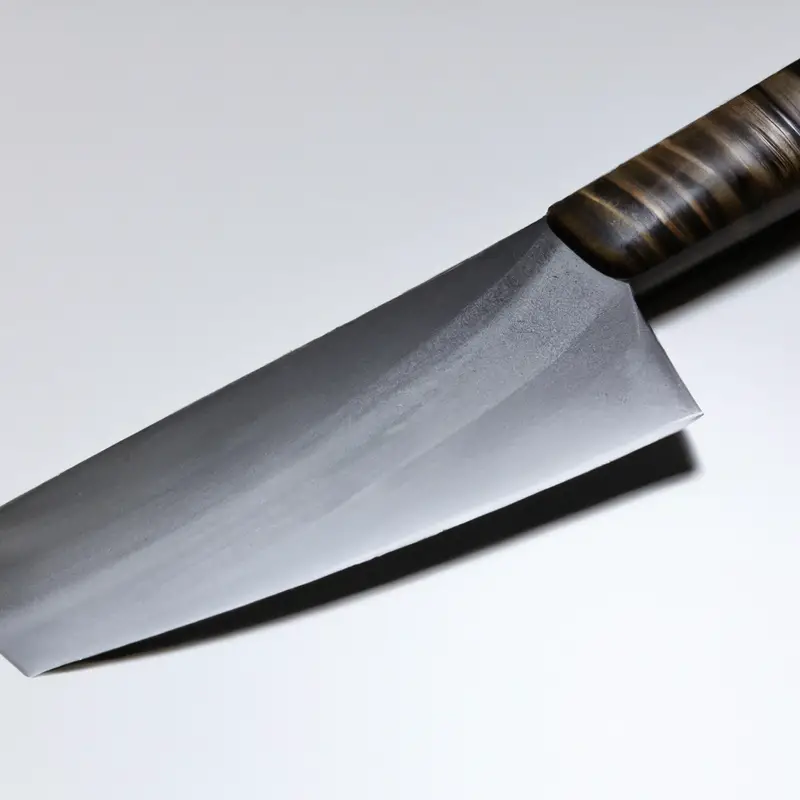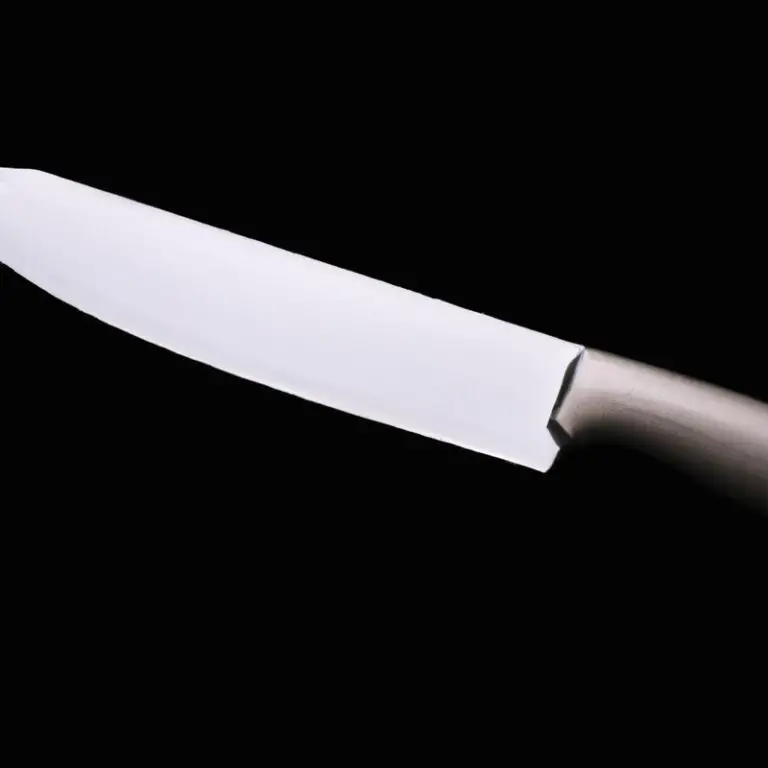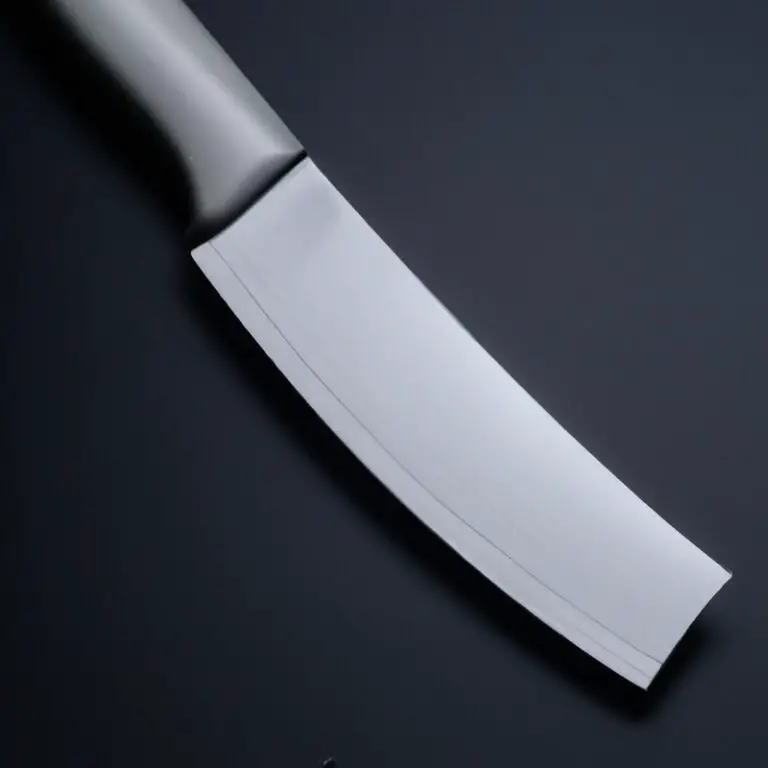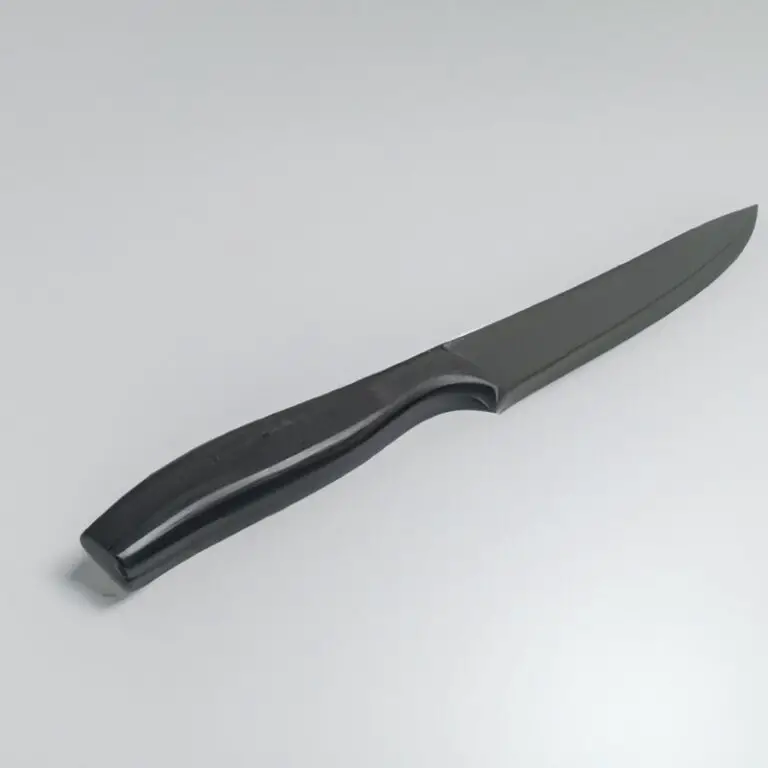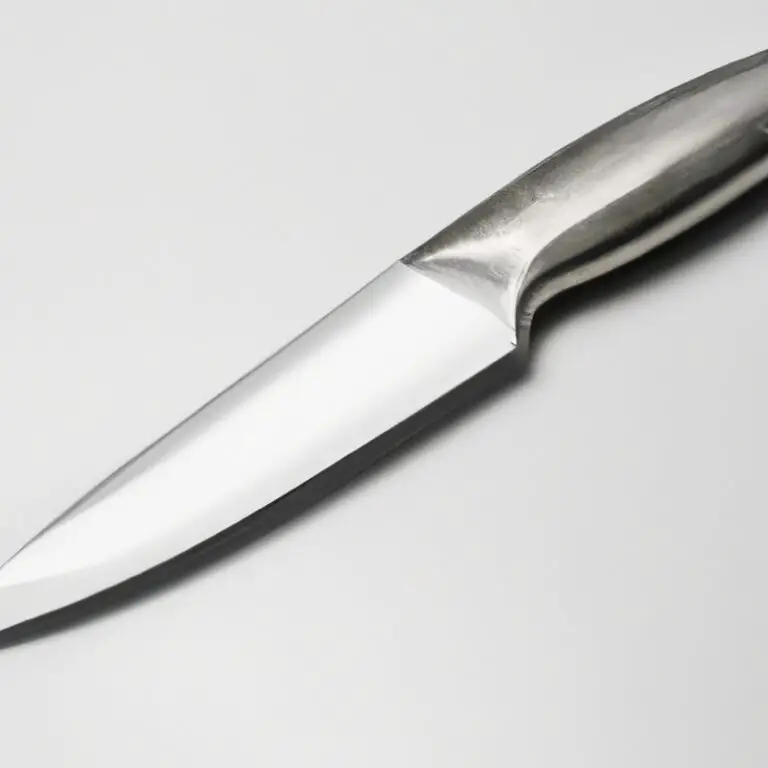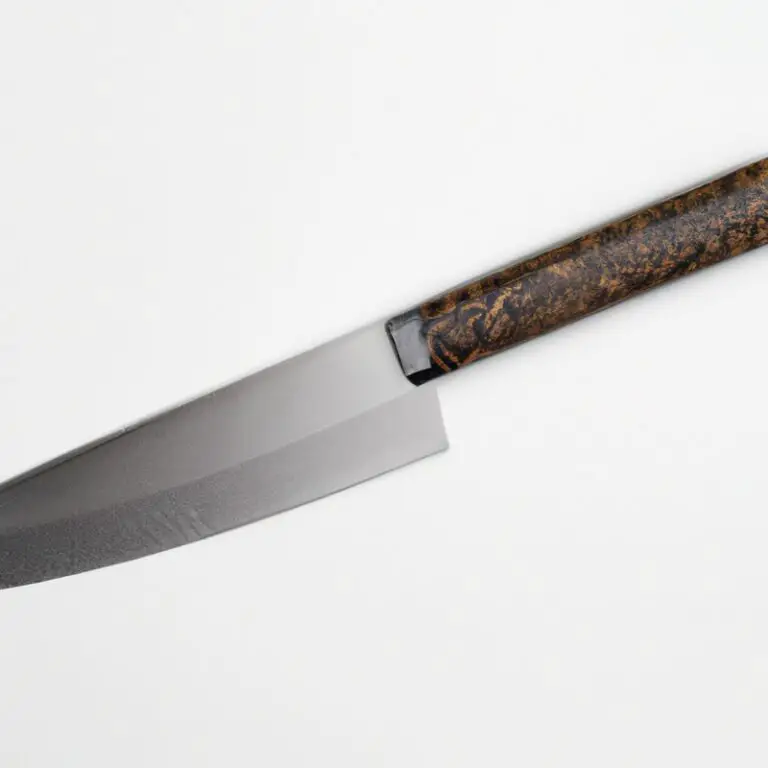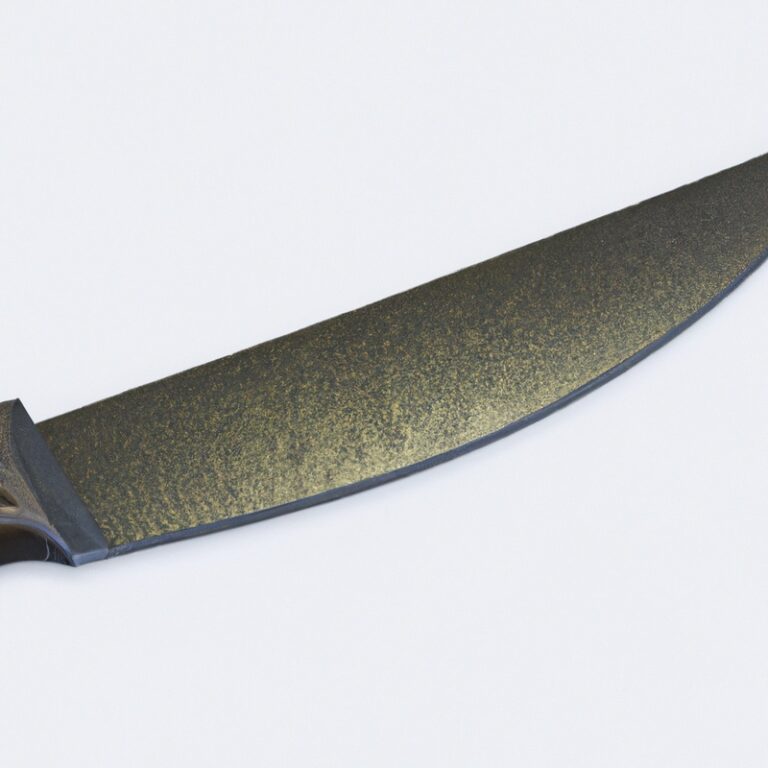What Are The Best Techniques For Deboning Meat With a Gyuto Knife? Master It Now!
Key Takeaways:
- Gyuto knives are an excellent choice for deboning meat with precision and ease.
- Proper technique involves using the tip of the knife to separate the meat from the bone gradually.
- Maintaining a sharp blade and a secure grip on the handle is crucial for successful deboning.
- Practice and patience are essential, but with the right technique and tools, anyone can become proficient at deboning meat with a Gyuto knife.
Picture this: you’ve spent hours marinating a perfect cut of meat, and now it’s time to prep it to perfection. But it all comes down to the right tool for the job- a Gyuto knife.
Whether you’re a professional chef or just someone who loves to cook, understanding the best techniques for deboning meat with a Gyuto knife is essential for achieving consistent and delicious results.
In this article, I’ll guide you through the benefits of using a Gyuto knife for deboning, understanding the anatomy of meat, sharpening and honing, safe handling techniques, and much more to help you elevate your culinary game. So, let’s get started!
| Technique | Description |
|---|---|
| Pin-boning | The process of removing bones by sliding the knife along the bone, separating the meat from the bone while minimizing waste. |
| Butterflying | The technique of halving the meat so it lays flat, and removing the bone while keeping the meat attached, resulting in a perfect cut for grilling and roasting. |
| Frenching | A technique for presenting meat in an elegant fashion by removing the meat and fat that surrounds the bone, creating a cleaner look and increasing the overall aesthetic of the dish. |
| Strip-Slicing | A technique for removing meat from bones that involve dragging the edge of the blade along the bone while cutting the meat to produce even slices, commonly used for meat such as steak or pork chops. |
Benefits of using a Gyuto knife for meat deboning
Benefits of using a Gyuto knife for meat deboning:
- Precision: The Gyuto knife has a sharp and thin blade that makes it easy to debone meat with precision.
- Versatility: Gyuto knives are multi-purpose and can also be used for cutting, slicing, and chopping, making it a versatile addition to any kitchen.
- Comfort: Its ergonomic design and balanced weight allow for comfortable use even during extended periods of deboning meat, reducing hand fatigue and discomfort.
- Durability: Gyuto knives are made from high-quality materials, making them sturdy and long-lasting, providing a consistent performance over time.
- Safe to use: Gyuto knives are safe to use, and when used correctly, they minimize the risk of injuries during deboning meat.
Overall, the Gyuto knife is an excellent choice for meat deboning due to its precision, versatility, comfort, durability, and safety features. It’s a valuable tool to have in any kitchen, and understanding how to use it effectively is necessary to get the most out of it.
Understanding the anatomy of the meat for efficient deboning with a Gyuto knife
To efficiently debone meat with a Gyuto knife, it is essential to understand the anatomy of the meat. Different animals have varying bone structures, and thus, deboning techniques may differ.
Understanding the bone structure helps to navigate and visualize where bones are located, making it easier to separate meat from bone without damaging the muscles.
Familiarizing yourself with the skeletal structure also helps to avoid wastage of meat by minimizing loss due to improper cuts. To gain an understanding of meat anatomy, refer to diagrams or ask for guidance from a professional.
Preparing the Gyuto knife for deboning meat: sharpening and honing
Before using a Gyuto knife for deboning meat, it’s crucial to prepare it by sharpening and honing the blade. Sharpening involves removing any dull edges or nicks using a sharpening stone, whereas honing involves realigning the edge of the blade to ensure maximum sharpness.
To sharpen, hold the blade at a slight angle to the stone and gently slide it back and forth, starting from the heel to the tip of the blade.
Repeat on the other side. Honing involves using a honing steel to realign the blade’s edge.
Hold the steel upright with the tip resting on a countertop and place the blade’s heel against the steel.
Gently draw the blade towards you, starting from the heel to the tip of the blade, while maintaining the same angle. Repeat on the other side.
Proper sharpening and honing of the Gyuto knife will ensure easy and efficient meat deboning.
Techniques for safely handling the Gyuto knife during meat deboning
To safely handle the Gyuto knife during meat deboning, you should:
- Always use a sharp knife to minimize the risk of slippage and injury.
- Hold the knife firmly and position your fingers away from the blade’s path.
- Use a cutting board made of a non-slip material to prevent the knife from sliding.
- Cut through the meat with a gentle slicing motion, rather than using forceful chopping motions.
- Keep your eyes focused on the blade and the meat to ensure accurate cuts.
- Keep the knife away from your body and others while deboning.
- Clean the knife regularly to remove any debris or food particles that may impair its performance or cause bacterial growth.
Step-by-step guide to deboning meat with a Gyuto knife
Step-by-step guide to deboning meat with a Gyuto knife:
- Start by preparing the meat for deboning by removing any excess fat and trimming unwanted parts.
- Identify the bones and joints in the meat, and make a small incision to get started.
- Use the Gyuto knife to cut the meat along the bone, gradually separating it from the bone.
- Cut through the joints using the knife tip, and gently pull apart the meat from the bone until it releases completely.
- Continue the process until all bones are removed, taking care to avoid damaging the meat in the process.
- Once all bones are removed, make any final cuts necessary to ensure the meat is fully deboned and ready for cooking.
- Clean the Gyuto knife thoroughly after use to maintain its sharpness and effectiveness.
By following these steps carefully and taking your time, you can effectively debone meat with a Gyuto knife for optimal results in your cooking.
Tips for maintaining the Gyuto knife during and after deboning
Maintaining your Gyuto knife is crucial for its longevity and performance. Here are some tips to keep in mind during and after deboning:
- Clean the knife with warm soapy water after use and dry it thoroughly.
- Use a honing steel to maintain the blade’s sharpness before and after use.
- Avoid washing the knife in a dishwasher as it can damage the blade.
- Store the knife in a sheath or a knife block to protect the blade and prevent accidents.
- Sharpen the blade when necessary using a sharpening stone or a professional sharpener.
By following these maintenance tips, your Gyuto knife will remain in top condition and serve you well for years to come.
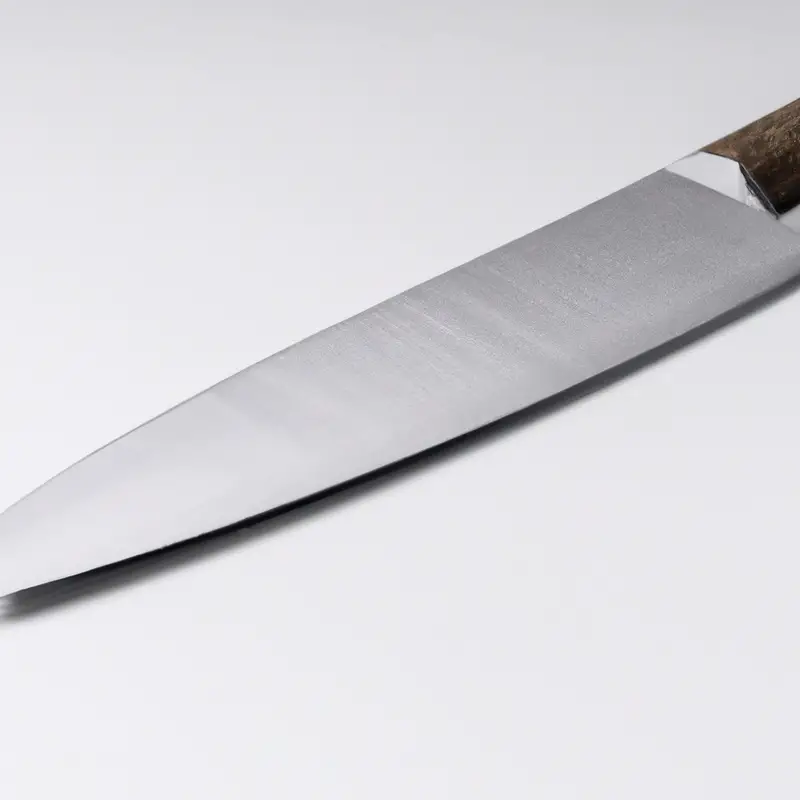
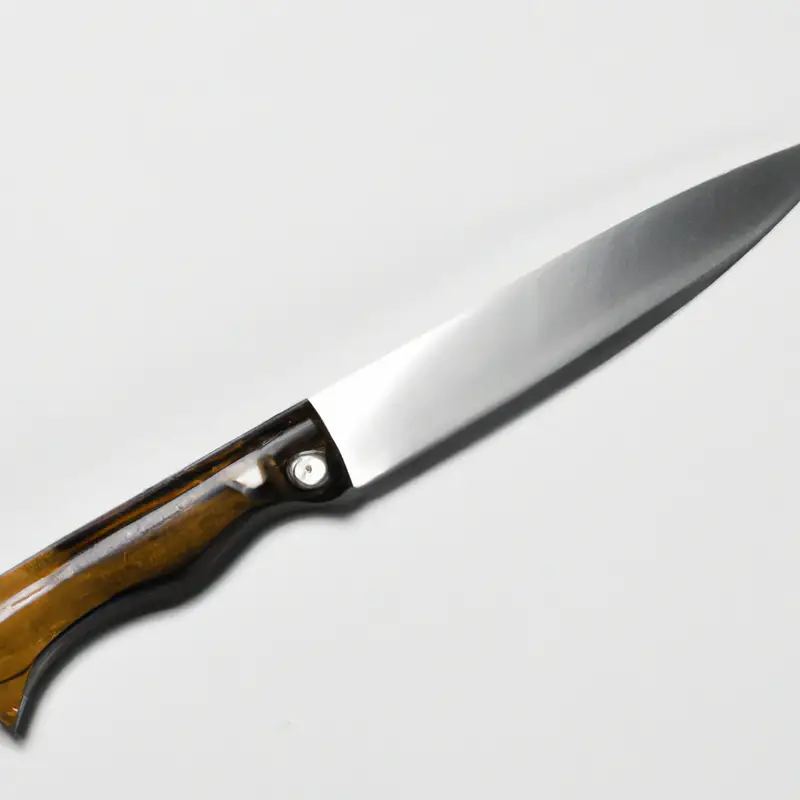
Common mistakes to avoid when using a Gyuto knife for meat deboning
Avoiding mistakes while using a Gyuto knife for meat deboning is crucial to ensure safety and achieve the best results. Here are some of the common mistakes to avoid:
- Using a dull Gyuto knife: A dull Gyuto knife can slip while deboning, causing accidents. Always ensure to sharpen the knife before use.
- Not using the right cutting technique: Using the wrong cutting technique can result in wasted meat, injuries, and poor results. Always use the right cutting technique for different meat types.
- Applying excessive force: Applying too much force can break bones and damage the meat. Use gentle movements, and let the knife do most of the work.
- Not deboning in the right order: Not following the right deboning order can lead to wasted meat and awkward cuts. Follow a proper deboning order for the best results.
- Not maintaining the knife: A good Gyuto knife requires proper maintenance. not doing so can lead to dullness, rust, and injury risks. Ensure to clean and oil the knife after use.
By avoiding these mistakes, you can achieve efficient meat deboning, better results, andmost importantly, ensure safety during the process.
How to choose the right Gyuto knife for your meat deboning needs
When choosing a Gyuto knife for meat deboning, it is important to consider the blade length, blade thickness, and blade material. A blade length of 8-10 inches is suitable for most types of meat deboning.
A thinner blade allows for more precise cuts, while a thicker blade is more durable for tougher cuts of meat.
High carbon stainless steel is a popular material choice as it balances sharpness and durability. Additionally, a comfortable handle with a secure grip is important for safe and efficient deboning.
It is also recommended to choose a knife with a full tang for better balance and stability.
Ultimately, it is important to choose a Gyuto knife that feels comfortable in your hand and meets your specific meat deboning needs.
Essential accessories to enhance your Gyuto knife deboning experience
Essential Accessories to Enhance Your Gyuto Knife Deboning Experience:
- Cutting board: Use a high-quality, sturdy cutting board to protect your blade’s edge and prevent it from dulling quickly. A wooden or plastic board is ideal.
- Meat tenderizer: You can use a meat tenderizer to break down collagen and connective tissue in the meat, making it easier to debone.
- Meat thermometer: A meat thermometer helps you to cook the meat to the perfect temperature and avoid undercooked meat.
- Glove: Consider using a cut-resistant glove made of food-grade materials to protect your hands while deboning.
- Tweezers: A good pair of tweezers will help you remove small bones and cartilage.
- Kitchen shears: Use kitchen shears to cut through joints, tendons, and other tough tissues more comfortably.
- Knife sharpener: Keep your blade sharp by using a honing and sharpening tool regularly.
Using these essential accessories will enhance your Gyuto knife deboning experience and make the process more efficient and safe.
Developing a deboning routine with your Gyuto knife for consistent results
Developing a deboning routine with your Gyuto knife is crucial for consistent results. It involves creating a systematic approach to the deboning process that you can follow every time you use your knife.
Here are some tips to help you develop a routine that works for you:
- Always start with a sharp and well-honed blade. This ensures a cleaner cut and reduces the risk of injury.
- Familiarize yourself with the meat’s anatomy to identify the different cuts of meat, joints, and bones.
- Use a cutting board to keep the meat stable and your hands safe.
- Always grip the knife handle firmly and use a proper cutting technique to avoid accidents.
- Plan your cuts and follow the same pattern every time for consistent results.
- Take breaks to clean the blade and avoid fatigue, which can lead to accidents.
- After deboning, clean and dry your knife properly to prevent rust and corrosion.
By developing a deboning routine with your Gyuto knife, you’ll reduce the risk of accidents, improve your efficiency, and achieve consistent results every time.
Final Verdict
Mastering the techniques for deboning meat with a Gyuto knife takes practice and patience, but the results are well worth the effort. Understanding the anatomy of the meat and preparing the knife correctly are key elements for success.
By following the step-by-step guide and incorporating proper handling and maintenance techniques, you’ll be on your way to achieving consistent and excellent deboning results every time.
Remember to choose the right knife and accessories to enhance your experience, and to develop a routine to maximize your skills. Through the use of these techniques, you can be confident in your ability to expertly debone meat using a Gyuto knife, and take your culinary skills to the next level.

